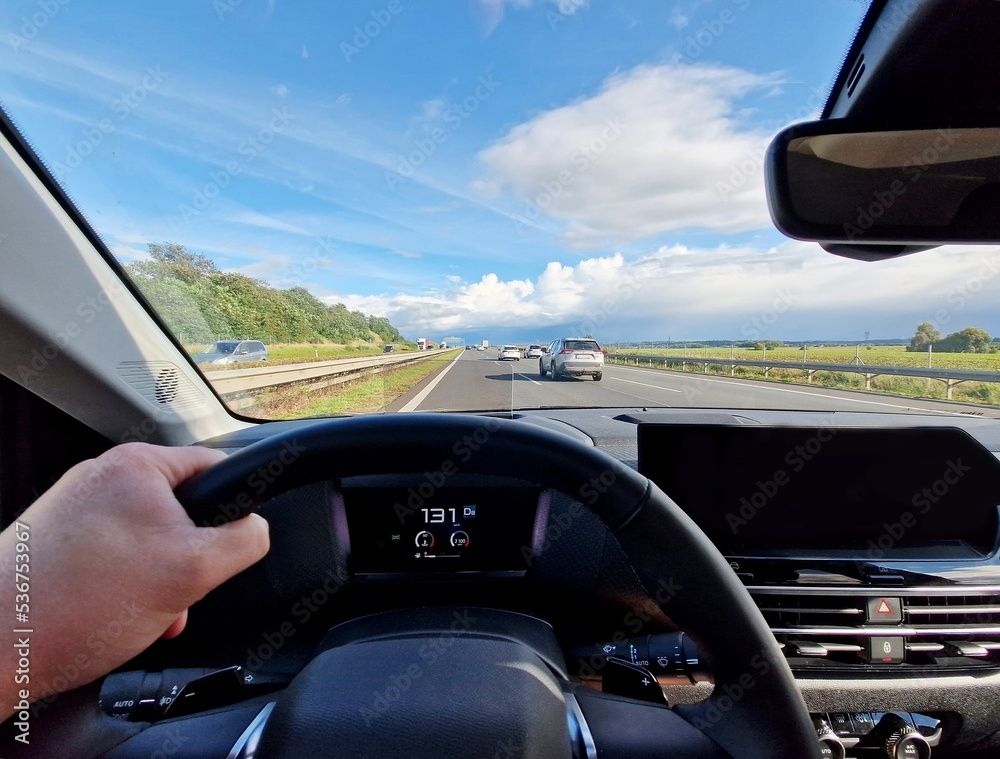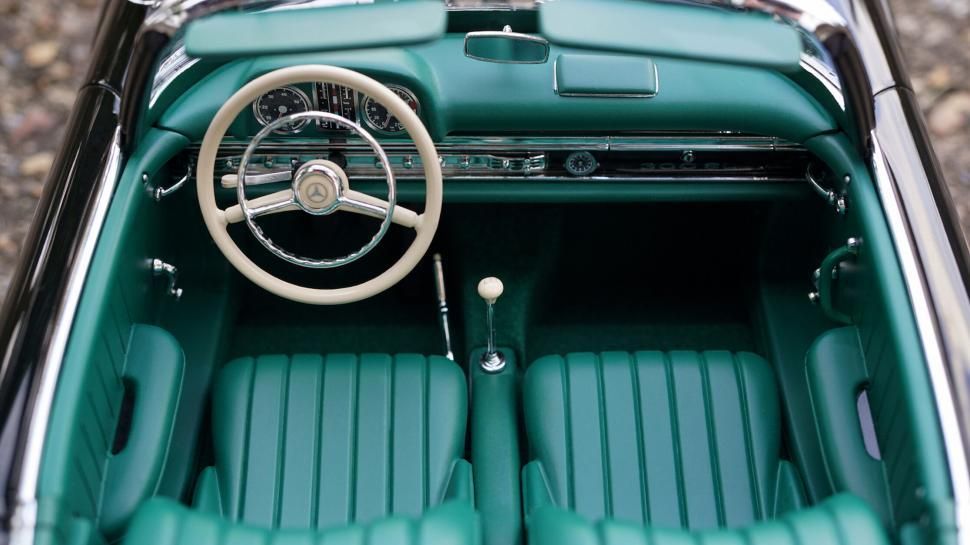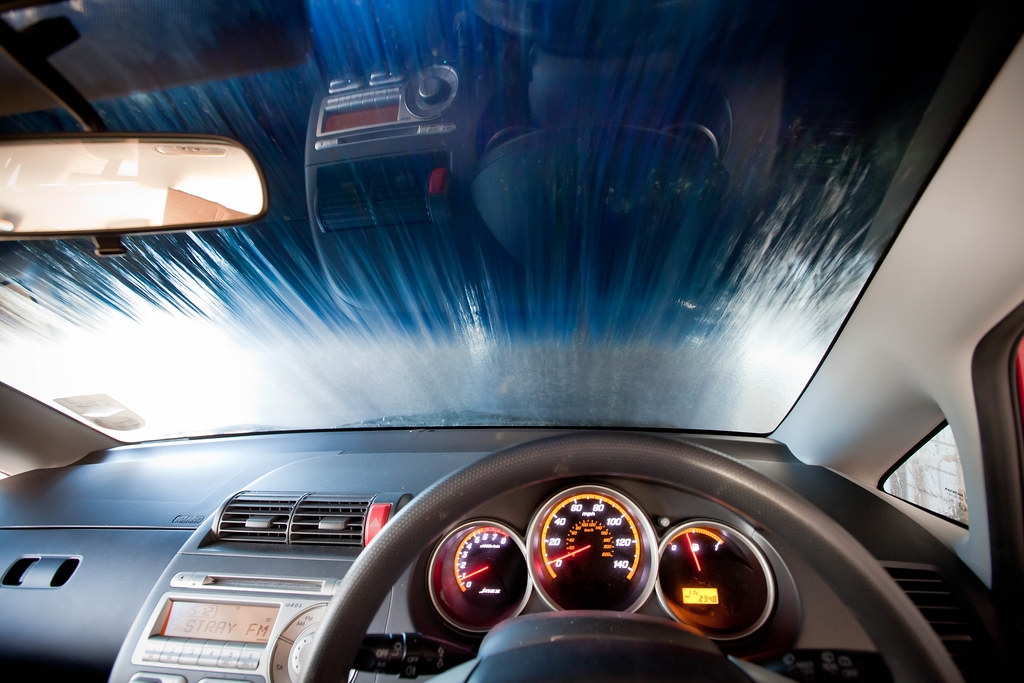
Alright, fellow gearheads and daily commuters! We all want our cars to last as long as possible, performing reliably and keeping us safe on the road. In an age where new vehicles are a significant investment, extending the life of your current ride isn’t just smart—it’s empowering. It’s about more than just avoiding costly repairs; it’s about maximizing the potential of a machine that serves us day in and day out. Think of it as a partnership: you take care of it, and it takes care of you for years to come.
Many believe that keeping a car in prime condition requires complex mechanical knowledge or frequent, expensive trips to the shop. While professional maintenance is undeniably crucial, there’s a treasure trove of simple, actionable tips that you can incorporate into your routine right now. These aren’t monumental overhauls; they are small, yet highly effective, changes in habit that collectively add up to significantly extending your car’s useful life expectancy. These strategies are grounded in expert knowledge and practical application, designed to give you concrete advice you can apply immediately.
From the moment you start your engine to how you park and even what you carry in your pocket, every detail can influence your vehicle’s longevity. We’ve sifted through the wisdom of experienced mechanics and automotive experts to bring you a comprehensive guide. Get ready to discover twelve straightforward adjustments that will not only improve your car’s performance but also defer those dreaded repair bills, keeping your beloved vehicle running smoothly for years beyond what you might expect. Let’s dive into the first half of these game-changing habits.

1. **Gentle Starts and Stops**
One of the most impactful changes you can make to extend your car’s life involves how you treat it during the initial minutes of a drive and how you bring it to a halt. Mechanics often highlight that the first 10 to 20 minutes of a vehicle being in use is when the most damage is done to critical components like the drivetrain and engine. This is particularly true when the engine is cold, as lubricants haven’t fully circulated and parts are operating under less-than-ideal conditions. Starting your drive with a slow, deliberate acceleration allows the engine to warm up gradually and the oil to reach all necessary areas, significantly reducing wear and tear.
Equally important is resisting the urge to rev up the engine upon startup, especially when the temperature outside is cold. This practice can rapidly add years of wear and tear to the engine. Instead of warming the engine by letting it idle excessively in the driveway, which doesn’t allow it to reach its peak operating temperature and can lead to incomplete fuel combustion and soot deposits, it’s better to simply drive away gently after a brief pause. Light to medium acceleration, keeping the engine RPMs below 3,000 for the first few hours of driving a new car, is also critical during its break-in period, but the principle of gentle acceleration applies throughout the car’s life.
Beyond starting, how you brake and accelerate throughout your journey also plays a critical role. Avoiding quick accelerations and high-speed driving, particularly when the outside temperature is very cold or very hot, is key. Such aggressive driving behaviors place undue stress on various vehicle systems, leading to more frequent repairs over time. Smooth, controlled acceleration and deceleration are not just about fuel efficiency; they’re fundamental to preserving your engine, transmission, brakes, and suspension components.
Furthermore, the way you use your brakes has a direct impact on their lifespan and overall vehicle wear. Avoiding quick stops, often referred to as slamming on the brakes, reduces the strain on your braking system and helps prevent premature wear of brake pads and rotors. Anticipating traffic and allowing for gradual deceleration is a habit that will serve your car—and your wallet—well. By adopting a more patient and careful driving style, you’re investing directly in the longevity of your vehicle’s most vital mechanical parts.
Read more about: 13 Essential Lifehacker Strategies to Maximize Your Highway Fuel Economy and Save Serious Cash

2. **Neutral at Red Lights**
Here’s a small, yet remarkably effective, change that can reduce significant strain on your engine and automatic transmission: shifting into neutral when stopped at red lights. This often overlooked habit can make a tangible difference in the long-term health of your car’s powertrain. When your vehicle is stopped in “drive,” the engine is still working to propel the car, even if it’s not moving. This continuous effort, albeit subtle, contributes to wear and tear on both the engine and the automatic transmission.
Consider the mechanics: with the car in drive, the torque converter is still engaged, attempting to transfer power to the wheels. This creates a load on the engine and generates heat within the transmission fluid, which over time can accelerate the degradation of transmission components. By simply shifting into neutral, you disengage the drivetrain, allowing the engine to idle freely without the constant load of pushing against the brakes. This immediate reduction in stress can help prolong the life of your transmission, a notoriously expensive component to repair or replace.
This tip is particularly beneficial in stop-and-go traffic or at prolonged intersections. While it might seem like a minor inconvenience to shift the gear selector, the cumulative effect of reducing this constant load can be substantial. It’s a proactive step that minimizes the heat and mechanical stress within the transmission, safeguarding its internal parts from unnecessary strain. It also allows your engine to operate more efficiently at idle, reducing fuel consumption slightly and minimizing wear on engine mounts.
Implementing this habit is straightforward: when you come to a complete stop, gently move the gear selector from ‘Drive’ to ‘Neutral.’ When the light turns green, shift back to ‘Drive’ and proceed. This simple action interrupts the continuous strain on your powertrain, contributing to a cooler, less stressed transmission and a happier engine. It’s a testament to how small adjustments in driving behavior can yield significant benefits for your car’s endurance.
Read more about: Unlocking Influence: How a Deep Understanding of Psychology’s Foundations Can Empower Your Salary Negotiations

3. **Mindful Steering**
Many drivers, often unconsciously, engage in a habit that can be detrimental to their power steering pump: holding the steering wheel in extreme right or left turns for extended periods. While it might seem harmless, keeping the wheel at full lock for more than a few seconds places immense pressure on the power steering system. This excessive pressure can lead to premature wear and damage to the power steering pump, a component crucial for making steering effortless.
The power steering pump works by forcing hydraulic fluid through a system to assist you in turning the wheels. When the steering wheel is held at its absolute limit, the pump is forced to work against a completely closed system, essentially deadheading the pump. This dramatically increases fluid temperature and internal pressure within the pump, causing it to labor unnecessarily. Over time, this stress can lead to leaks, premature pump failure, and the need for costly repairs. It’s a common issue that can be easily avoided with a slight adjustment in driving habit.
To protect your power steering pump, simply avoid holding the steering wheel in an extreme right or left position for more than a few seconds. If you’re maneuvering in a tight spot or making a sharp turn, try to ease off the full lock just a fraction, even a millimeter, as soon as you’ve reached the desired angle. This tiny release of pressure is often enough to alleviate the extreme strain on the pump without compromising your turning radius. It’s about being aware of the limits of your vehicle’s mechanical systems and respecting them.
This mindful steering practice isn’t just about saving your power steering pump; it’s also about fostering a more refined driving technique. By being conscious of your steering inputs, you contribute to the overall smooth operation of your vehicle and reduce stress on related components like tie rods and ball joints. It’s another example of how a seemingly minor adjustment in driving behavior can have a cascading positive effect on your car’s mechanical health, ensuring that your steering remains responsive and trouble-free for years.
Read more about: Your Next Home Awaits: Exploring the Top 14 States for Affordable Living and Exceptional Quality of Life

4. **Smart Fueling Habits**
Your car’s engine is only as healthy as the fuel it consumes, making smart fueling habits a critical, yet often overlooked, aspect of vehicle longevity. The primary rule here is to fuel up only at reputable gas stations. Not all gas stations maintain their equipment to the same standards; some may not have filters on their pumps, or if they do, they might not change them regularly. This means you run the risk of getting dirty gasoline, where sediment can end up directly in your fuel tank. Dirty fuel can quickly clog fuel filters and injectors, leading to poor performance in the short term and potentially expensive repairs down the road.
Beyond selecting a quality station, there’s another crucial habit to adopt: avoid gassing up if you see a fuel tanker in the gas station parking lot. When the tanker fills up the underground tanks at a gas station, it inevitably stirs up the sediment that settles at the bottom. If you fill your tank during this period, you’re highly likely to draw this disturbed sediment directly into your vehicle’s fuel tank. This sediment is a significant threat to your fuel system, capable of causing blockages and requiring premature maintenance or repairs to components that are essential for efficient fuel delivery.
Establishing a relationship with a trusted gas station and sticking with it for your fuel-ups can save you a lot of headache and expense. Ask whether their gas is filtered at the pump and how often they change those filters. If you encounter evasiveness or a “song and dance,” it’s a clear signal to find another station. Some stations may also improperly mix alcohol and fuel or even water down their product, further compromising your engine’s health. Quality fuel is the lifeblood of your engine, so vigilance in this area pays dividends.
In essence, these smart fueling habits are a preventative measure against a cascade of potential engine problems. By ensuring that only clean, high-quality fuel enters your tank, you protect your fuel filters, injectors, and ultimately, the intricate workings of your engine. It’s a simple choice to make at the pump, but one that profoundly impacts your car’s performance, reliability, and long-term operational costs. Think of it as feeding your car the best possible diet to keep it strong and healthy.
Read more about: Melissa McCarthy’s Stunning Transformation: An In-Depth Look at Her Two-Decade Wellness Journey That’s Inspiring Millions

5. **Lighten Your Keychain**
This might seem like a trivial detail, but the weight of your keychain can have a surprisingly direct impact on the longevity of your car’s ignition switch. Many drivers carry a substantial collection of keys—house keys, office keys, gym keys, loyalty cards, and various trinkets—all dangling from the same ring as their car key. This combined weight, coupled with the constant jostling and vibrations of daily driving, creates a leverage point that can slowly but surely wear out the delicate tumblers inside the ignition cylinder.
Over time, this continuous stress can lead to ignition switch failure, leaving you stranded. The weight of numerous keys, constantly pulling and bouncing, exerts pressure on the internal mechanisms of the ignition. These tumblers are designed for precision and light use, not for supporting a heavy load through thousands of miles of bumps and turns. The wear is cumulative, making ignition switch replacement an eventual necessity for those who carry heavy keychains.
Fortunately, this is an incredibly easy problem to solve. Invest in a lightweight keychain that allows you to easily separate your ignition key from all your other keys. When you get into your car, simply detach your car key and use only that single key in the ignition. This simple act eliminates the excess weight and the damaging leverage it creates, significantly extending the service life of your ignition switch. It’s a small change in habit that offers big protection for a crucial component.
You’ll likely receive a warning before total ignition failure. A telltale sign of imminent trouble is when your ignition key “sticks” or becomes difficult to turn when you try to start the car. If you notice this, consider it a clear signal to address the issue immediately. Replacing a failing ignition switch proactively is far less inconvenient and potentially safer than being unexpectedly stranded due to a complete breakdown. Lightening your load literally lightens the load on your car’s sensitive parts, proving that sometimes, less is truly more when it comes to car care.
Read more about: Inside the Stylish Essentials: Must-Have Items Women Carry in Their Handbags

6. **Shade Parking for Paint and Interior Protection**While a garage is the ultimate sanctuary for your vehicle, offering comprehensive protection from the elements, most of us don’t have that luxury readily available. For those times when you’re parking outdoors, one of the simplest yet most effective ways to preserve your car’s finish and interior is to consistently seek out shade. Parking in the shade helps to dramatically reduce the detrimental UV damage that the sun’s relentless rays inflict upon your vehicle. The sun is a powerful force, and its impact on your car is constant and cumulative.
While a garage is the ultimate sanctuary for your vehicle, offering comprehensive protection from the elements, most of us don’t have that luxury readily available. For those times when you’re parking outdoors, one of the simplest yet most effective ways to preserve your car’s finish and interior is to consistently seek out shade. Parking in the shade helps to dramatically reduce the detrimental UV damage that the sun’s relentless rays inflict upon your vehicle. The sun is a powerful force, and its impact on your car is constant and cumulative.
Ultraviolet (UV) rays are notorious for breaking down paint, causing it to fade, crack, and peel over time. This isn’t just an aesthetic concern; the paint is your car’s first line of defense against rust and corrosion on the body panels. By parking in the shade, you create a natural barrier against this constant assault, slowing down the oxidation process and preserving the vibrancy and integrity of your car’s exterior finish. It’s a passive but highly effective method of protecting your investment and maintaining its resale value.
The benefits of shade parking extend deep into your car’s interior as well. Prolonged exposure to intense sunlight and heat can cause significant damage to your dashboard, upholstery, and plastic components. Dashboards can crack and warp, fabric seats can fade, and leather can dry out and crack. By keeping your car out of direct sunlight, you mitigate these issues, preserving the material quality and comfort of your interior. As an added bonus, you’ll step into a noticeably cooler car on hot sunny days, enhancing your comfort immediately.
If natural shade isn’t available, or if parking under a tree brings unwanted bird droppings and tree sap, consider investing in a car shade. These come in various forms, from foldable windshield shades to pleated types that attach to your windows. While a shade might seem like a minor accessory, it provides an invaluable layer of protection against the sun’s harsh glare, keeping your interior components from degrading prematurely. This simple habit of seeking shade or using a car shade is a powerful weapon in the battle against time and the elements, adding years to the aesthetic appeal and structural soundness of your vehicle.
Alright, we’ve covered the foundational driving habits and immediate actions that can dramatically impact your car’s longevity. But the journey to a long and healthy vehicle life doesn’t stop there. Beyond the daily drive, a series of essential maintenance practices are crucial for enduring vehicle health, ensuring your ride remains reliable, efficient, and enjoyable for years to come. These aren’t just about avoiding rust and wear; they’re about preserving the very essence of your automotive investment. Let’s dive into the next set of game-changing strategies, each designed to empower you with practical, expert-driven solutions for ultimate car care.
Read more about: Beyond the Badge: Uncovering the True Financial Realities of Owning a Classic Porsche 911

7. **Regular Interior Cleaning and Protection**
When we talk about car care, the focus often drifts to what’s under the hood or on the exterior paint. Yet, the interior of your vehicle deserves just as much diligent attention. Neglecting your car’s cabin can lead to premature wear and tear on upholstery, dashboards, and floor mats, not to mention creating an environment that harbors dirt and allergens. Regularly cleaning the inside prevents the accumulation of abrasive dirt particles and corrosive spilled liquids, which can slowly but surely degrade your vehicle’s materials. Think of it as protecting your personal sanctuary on wheels.
Effective interior cleaning begins with thorough vacuuming. Small cordless models often lack the power needed, so opt for a powerful vacuum to remove deeply embedded dirt and debris from carpets and upholstery. Crucially, use the appropriate wand heads to avoid marring or scratching interior surfaces. A bare metal wand can leave unsightly marks, particularly on plastic trims or delicate fabric. This meticulous approach ensures that dirt, which acts as an abrasive, is removed before it can grind away at your vehicle’s interior over time.
For vinyl surfaces, a solution of mild detergent and water, applied with a clean, damp cloth, works wonders. This simple step not only cleans but also protects against the drying and cracking that can occur over time due to dirt and UV exposure. Remember, a clean interior not only preserves the aesthetic appeal and resale value of your car but also enhances your driving experience by providing a fresh and comfortable environment. It’s a small effort that pays significant dividends in comfort and longevity.
Read more about: Guard Your Investment: 15 Worst Storage Mistakes That Could Ruin Your Classic Car Over a Decade

8. **Protecting Upholstery (Fabric and Leather)**
Your car’s seats endure a lot—spills, daily friction, sun exposure, and general wear. Proactively protecting your upholstery, whether it’s luxurious leather or durable fabric, is a non-negotiable step for extending your car’s lifespan and maintaining its interior appeal. Addressing spills promptly and applying protective measures can save you from costly re-upholstering down the line and keep your cabin looking pristine. This expert advice covers both common types of seating, ensuring comprehensive care.
For vehicles equipped with leather seats, being proactive is key to preventing them from drying out and cracking. Leather, like skin, needs moisture and protection. Regularly use a high-quality leather cleaner to gently remove dirt and stains without stripping essential oils. Following up with a leather protectant, especially one formulated for pigmented or top-coated grain leather, helps resist future stains and makes cleaning easier. Crucially, choose a protectant that also acts as a leather conditioner, keeping the material supple and preventing the brittle texture that leads to cracking. This dual action preserves both the look and feel of your premium interior.
Fabric seats also benefit immensely from protection. A fabric protectant, such as Scotchgard, can be a game-changer, creating an invisible barrier that repels dirt and stains. Before applying, ensure the fabric is thoroughly cleaned, and always test the product on an inconspicuous area to confirm it won’t discolor the material. This protective layer means spills bead up rather than soaking in, giving you precious time to wipe them away. This simple application safeguards against permanent marks and keeps your fabric looking newer for longer, upholding its integrity against daily challenges.
For those with younger passengers, an often-overlooked but incredibly effective tip is to place a towel, ideally with a sheet of heavy plastic underneath, under baby carriers or child seats. Kids are prone to dropping food and drinks, and these incidents can lead to permanent stains on your upholstery. The towel and plastic act as a crucial barrier, preventing spills from seeping into the seat fabric or leather. This minor adjustment is a practical, immediate solution to protect your car’s interior from the unpredictable messes that come with family adventures, extending the life and cleanliness of your vehicle’s seating.

9. **Prompt Paint Touch-Ups**
The integrity of your car’s paint job extends far beyond mere aesthetics; it serves as the vehicle’s primary defense against the insidious march of rust and corrosion on its body panels. Even the smallest chip or nick in the paint, often found around door edges, can expose the bare metal beneath, creating an open invitation for moisture and air to initiate the oxidation process. This seemingly minor flaw can quickly escalate into a significant problem, compromising the structural health and appearance of your vehicle.
The urgency of addressing these nicks without delay cannot be overstated. A critical reason for immediate action is that paint simply won’t adhere well to rust. Once rust begins to form, it creates an uneven, flaky surface that prevents new paint from bonding effectively, making a proper repair far more difficult and extensive. This means that merely touching up over existing rust is often a futile effort, as the underlying corrosion will continue to spread, eventually bubbling up through the fresh coat. This is why being proactive is paramount.
To combat this, it’s wise to keep a supply of matching touch-up paint on hand, readily available for when those inevitable minor abrasions occur. By applying touch-up paint as soon as a nick is spotted, you effectively seal the exposed metal, denying rust the opportunity to take hold. This simple, inexpensive measure safeguards your car’s exterior, preserving its finish and, more importantly, its long-term resistance to structural damage. It’s an investment in your car’s future, protecting its value and preventing larger, more expensive bodywork down the road.
Read more about: Before ‘Friends’ Fame: Uncovering Jennifer Aniston’s Surprising Path to Stardom

10. **The Importance of Winter Washing**
When the winter months descend, bringing with them snow, slush, and biting cold, many drivers might be tempted to put off car washes, thinking it’s a pointless endeavor when the car will just get dirty again. However, this common misconception can lead to significant, long-term damage to your vehicle. In reality, washing your car during winter is arguably more critical than at any other time of the year. It’s a fundamental part of a proactive car care regimen that specifically combats the harsh realities of cold-weather driving.
The primary culprit in winter damage is road salt, often mixed with sand and other de-icing chemicals. This corrosive cocktail, liberally spread on roads to improve traction, clings to your vehicle’s body, undercarriage, and wheel wells. If left unwashed, this salty residue becomes a constant corrosive agent, aggressively attacking metal components and accelerating the formation of rust. The damage is particularly insidious when temperatures fluctuate, repeatedly rising above and then falling below freezing, creating optimal conditions for rapid corrosion.
Therefore, regular winter washing is not just about keeping your car looking good; it’s a vital preventative measure against structural degradation. When you wash your car in winter, pay special attention to rinsing the undercarriage and hard-to-reach areas like the bumpers and inside the wheel wells, where salt and grime tend to accumulate most heavily. Many modern car washes offer undercarriage rinses, which are highly effective at flushing away corrosive materials that you can’t easily reach at home. This diligent effort protects critical components, preserving the vehicle’s integrity and extending its lifespan significantly.
Read more about: Navigate Luxury Vehicle Registration: The 12 Best States for Low Sales Tax in 2025

11. **Tire Pressure Vigilance**
Maintaining the correct tire pressure is one of the easiest, yet most impactful, actions you can take to prolong your car’s lifespan and ensure optimal performance. It’s a fundamental aspect of vehicle maintenance that influences everything from tire longevity and fuel efficiency to overall driving safety. Under-inflated tires are a significant problem, leading to excessive heat buildup and stress within the tire structure, which can dramatically shorten their lifespan and even lead to dangerous blowouts. They are, as the experts say, a tire salesman’s best friend because they accelerate the need for replacements.
To stay on top of this, make it a habit to check your tire pressure at least once a month, and more frequently in hot weather or if you notice significant temperature fluctuations in your area. For the most accurate reading, always check your tires when they are “cold”—meaning they haven’t been driven for more than a mile. Use a reliable tire pressure gauge, comparing your readings to the manufacturer’s recommended pressure, which is typically found on a sticker inside the driver’s side door jamb or in your owner’s manual. Correct inflation ensures even wear across the tire tread, maximizing its useful life.
Beyond extending tire life, properly inflated tires contribute significantly to better gas mileage. When tires are under-inflated, the engine has to work harder to move the vehicle due to increased rolling resistance, consuming more fuel. Conversely, over-inflated tires can also cause uneven wear, typically in the center of the tread, and reduce traction and ride comfort. Striking that perfect balance, as specified by your car’s manufacturer, is crucial for both economic efficiency and comfortable driving.
Furthermore, outdoor temperatures have a direct impact on tire pressure. A drop of just 10 degrees Fahrenheit can decrease a tire’s air pressure by 1 or 2 pounds per square inch (PSI), while hot weather can cause pressure to increase. This sensitivity means that drivers in climates with varying temperatures need to be particularly vigilant. Regular checks and adjustments, whenever needed, counteract these environmental effects, preventing accelerated wear and ensuring your tires—and by extension, your car—perform their best through every season.
Read more about: Navigating Retirement: Understanding the ‘Worst’ Financial Pitfalls and Products Targeting Seniors Over 70

12. **Consistent Tire Rotation**
Just as important as maintaining proper tire pressure is the practice of consistent tire rotation. This essential maintenance task might seem minor, but it plays a pivotal role in maximizing the lifespan of your tires and ensuring even wear, which in turn contributes to safer driving and improved vehicle handling. Tires on different axles and sides of a vehicle experience varying stresses and wear patterns, making periodic rotation crucial for distributing this wear uniformly. For instance, front tires typically wear faster due to steering and braking forces, while rear tires may experience less stress but can still develop uneven patterns.
Your vehicle’s owner’s manual is the definitive guide for tire rotation, specifying both the recommended rotation period and the exact pattern your car requires. These patterns can vary based on whether your vehicle is front-wheel drive, rear-wheel drive, all-wheel drive, or has directional tires. If the owner’s manual isn’t readily available, a general guideline is to rotate your tires every 6,000 to 7,500 miles. This interval typically coincides with oil changes for many vehicles, making it convenient to incorporate into your regular maintenance schedule.
The benefits of consistent tire rotation are numerous. By distributing wear evenly, you prevent any single tire from prematurely degrading, thereby extending the overall life of your entire set. This means you get the maximum possible mileage out of your investment before needing to purchase new tires. Moreover, even tire wear helps maintain consistent traction and handling characteristics, contributing to a more predictable and safer driving experience. It also reduces vibrations and road noise, enhancing ride comfort for everyone in the vehicle.
It’s worth noting that the first tire rotation is often particularly important in establishing an even wear pattern early in the tire’s life. If you’re unsure about the correct pattern or simply prefer professional assistance, your tire dealer is an excellent resource. They can perform the rotation correctly and inspect your tires for any other issues, providing expert advice. By adhering to a consistent tire rotation schedule, you’re not just extending the life of your tires; you’re actively contributing to the long-term safety, performance, and financial efficiency of your cherished vehicle.
Read more about: The Definitive Guide: Ranking the 13 Best Truck Bed Covers of 2025 for Security, Value, and Practicality
There you have it—a comprehensive guide to twelve small but incredibly powerful changes that will dramatically add years to your car’s lifespan. From the subtle art of gentle driving to the diligence of interior cleaning and the strategic care of your tires, each tip is a testament to the fact that proactive maintenance doesn’t have to be complicated or overwhelming. It’s about cultivating smart habits and understanding that every small effort you put into caring for your vehicle compounds over time, transforming it from a mere mode of transport into a reliable, enduring companion. Embrace these expert-backed strategies, and enjoy the peace of mind that comes with knowing your car is poised to serve you faithfully for many more miles and memories to come. Happy driving, and here’s to many more years on the road together!



